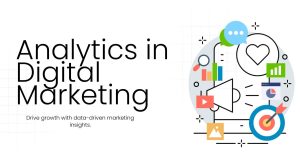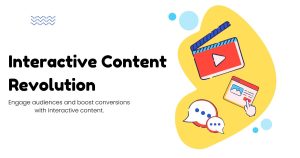How Emotional Marketing Can Save The World

Understanding Emotional Marketing
Emotional Marketing is a strategy that connects with people on a deeper level. Instead of just promoting features or benefits, it focuses on feelings. That could be joy, fear, sadness, hope, love, or even anger. The goal is to make someone feel something—and act because of it.
In today’s noisy world, emotional marketing is more than just a tactic. It’s a tool that brands and organizations can use to create real impact. Whether it’s fighting climate change, supporting mental health, or helping in humanitarian crises, emotional marketing has the power to move people, build communities, and even save the world.
Why Emotions Drive Action
People are not logical beings. We’d like to believe that we do, but research shows our emotions have far more influence. Which helps explain why ads that make us cry, laugh or feel inspired do tend to stick with us. They tap something real deep inside us.
This emotional rapport establishes trust. And when there’s trust, they’re also more likely to listen, to lend a helping hand, to volunteer. “That’s the power of emotional marketing — not only to sell things, but also to solve real-life issues.”
To make a global impact, emotional marketing often taps into the specific emotion that sells the most.
Creating Empathy at Scale
It is when we hear numbers that our minds get it. But when we hear a story about a real person — a child who found clean water, a family that escaped a war-torn country or a student who emerged from poverty — we feel something. Emotional marketing makes problems into stories. And stories build empathy.
When people feel empathy, they are more likely to donate, share, volunteer or advocate. They would look at others, not as if they are some long lost stranger, but as just a fellow human being. And that change of heart is where global change starts.
Changing Behavior for the Better
No matter whether it’s inspiring eco-friendly behaviors or increasing mental health awareness, emotional marketing has the power to nudge people in the right direction. With emotion, campaigns can persuade behavior without guilt or pressure.
For instance, instead of showing polar bears stranded on melting ice caps, a campaign could involve a young girl planting trees with her father. This image evokes hope and love — not fear — and yet it gets the message across. No one is eager to change when they feel judged; people are open to change when they are connected to feeling inspired.
Building Movements That Matter
Many of the greatest movements in the world have begun with emotional marketing. Consider campaigns such as “Black Lives Matter,” “#MeToo” and climate change efforts fronted by young voices. They took off because they resonated with people emotionally. They validated, empowered, cradled organs of speech, speech acts.
In breaking down experiential barriers that separate all humans, emotional marketing can rally people around a purpose. It converts silent supporters into trumpet blowers. It makes communities that are prepared to respond.
Making Brands a Force for Good
Companies today are expected to do more than just make money. Consumers want brands to care—about the planet, about people, about purpose. Emotional marketing helps companies show that they do.
When a business shares authentic stories, supports real causes, and speaks from the heart, people notice. And they reward those brands with loyalty, attention, and trust. In this way, emotional marketing isn’t just good for the world—it’s good for business too.
Technology Amplifies Emotional Reach
Thanks to social media and content platforms, emotional messages now spread faster and wider than ever. A heartfelt video, a powerful image, or a moving story can go viral in hours. This reach means even small organizations can make a big impact with the right emotional approach.
But with great reach comes great responsibility. Emotional marketing must always be honest and respectful. People can tell when emotion is used just for clicks. Authenticity is everything.
Real-World Examples of Emotional Marketing That Changed Lives
Take the “Like a Girl” campaign by Always. It didn’t just sell products. It challenged a harmful stereotype and boosted the confidence of young girls around the world. Another example is Dove’s “Real Beauty” campaign, which sparked conversations about body image and self-acceptance.
Then there are social causes like the “Ice Bucket Challenge,” which raised millions for ALS research. Why did it work? It made people feel involved, united, and connected to a larger mission.
These aren’t just marketing wins—they’re proof that emotional campaigns can lead to real-world change.
Why It Matters Now More Than Ever
We live in a world facing massive challenges—climate change, inequality, health crises, conflict. Facts alone won’t solve these problems. We need emotion. We need connection. We need people to care enough to act.
That’s what emotional marketing delivers. It reminds us of our shared humanity. It breaks through indifference. And in a world divided by opinions, emotions can still bring people together.
How to Practice Ethical Emotional Marketing
To make a real difference, emotional marketing must be done with care. Here are a few guiding principles:
1. Be Authentic
Don’t fake emotion. Use real stories, real people, and real experiences. Audiences can sense when something feels forced.
2. Respect the Subject
Never exploit pain or suffering. The goal is to build empathy—not to shock or manipulate.
3. Focus on Hope
While negative emotions can be powerful, hope tends to build longer-lasting change. Give people a reason to believe.
4. Offer a Clear Action
Emotion without action is wasted. Every campaign should clearly show what people can do to help.
The Future of Marketing with Heart
As more people seek purpose in their lives and work, emotional marketing will only grow in importance. The next generation of marketers won’t just focus on clicks and conversions. They’ll ask deeper questions: How are we making people feel? How are we making the world better?
By combining storytelling, empathy, and purpose, emotional marketing has the potential to transform industries, inspire movements, and yes—save the world.
Final Thoughts
Emotional marketing is not just a business strategy. It’s a force for change. By connecting with people where it matters most—their hearts—it creates bonds that lead to action.
Whether you’re a brand, a non-profit, or a single person with a mission, emotional marketing gives you a voice that cuts through the noise. It allows you to make people feel something powerful enough to move the world in a better direction.
If we use it wisely, emotional marketing might just be one of our greatest tools for good.





